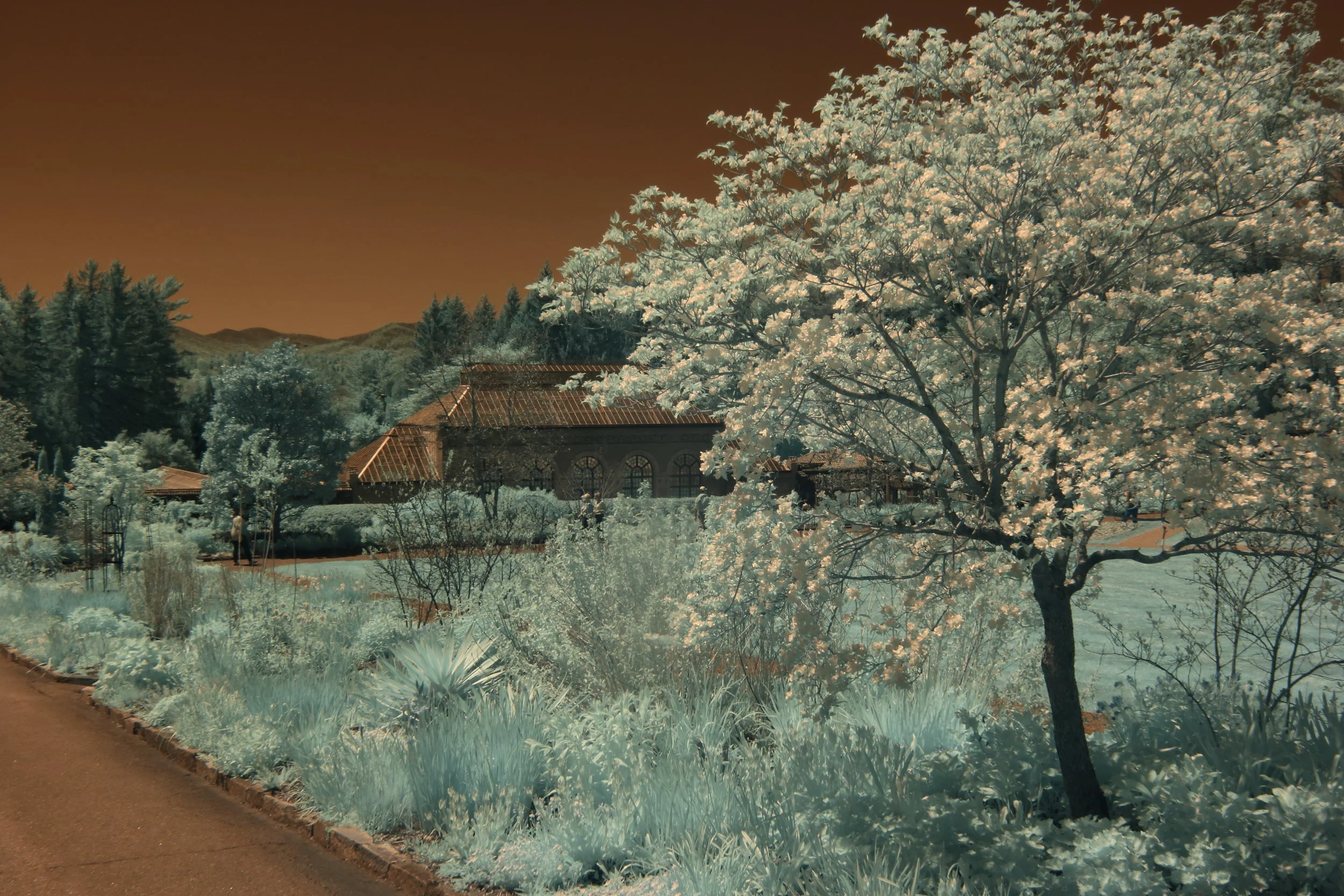Nikola Tesla once said, “If you want to find the secrets of the universe, think in terms of energy, frequency and vibration.” It has always intrigued me that of all the frequencies of light, humans can only see a small fraction. I have attempted to use Infrared filters on the front of my lens in the past to see the Infrared frequency, without much luck. If you have used one of these set ups you know that blocking visible light on the end of your lens leads to some issues with focus and exposure, namely 30 second exposures on bright sunny days, and guessing to focus, or removing the filter, focusing, and then screwing the filter back on. It’s a garbage way to work, lead to massive frustration, and frankly, shitty pictures.
I was fortunate to have a student, Liam Covey-Shannon, share with me a point and shoot camera that his father converted to Sensor Infrared, (instead of the filter on the lens, it’s over the sensor inside the camera which eliminates the focus and the long exposure times.) it was a cool camera to use, super convenient, freed me to play without a tripod and clunky shooting method. I have been wanting to make my own camera like this but have not been successful. I did find a company that would be willing to do it for me.
Life Pixel does Digital Infrared Filter Conversions for $275. They offer a few different filter types, and I chose the Enhanced IR filter. Looking at the picture below, you can see a sensor out of a Canon DSLR, and there is a metal band around the edge of the glass that covers the sensor. What Life Pixel does is replace that glass cover and replaces it will a filter that fits in the same bracket. They also set up a focus calibration for your camera because the light and heat focus on a different level. Focusing is done with live view on my Rebel T5I, which was difficult in broad day light so I picked up a LCD Viewfinder so I can see to focus.
Infrared Swap
The glass that is normally covering the sensor is replaced with an Infrared filter which blocks all visible light and only lets IR light through to the sensor.
Above is what the image looks like out of the camera.
And below is what it looks like after a Channel Swap, and some color tweaking.
I have been enjoying seeing the world in a different light with this converted camera and am looking forward to creating scenes using this look. I know that there is more to this world than what we see with our naked eye, and I hope to be able to pick up on more vibrations and positive energy. If you want to see more images like the one above, check out the my online store!



